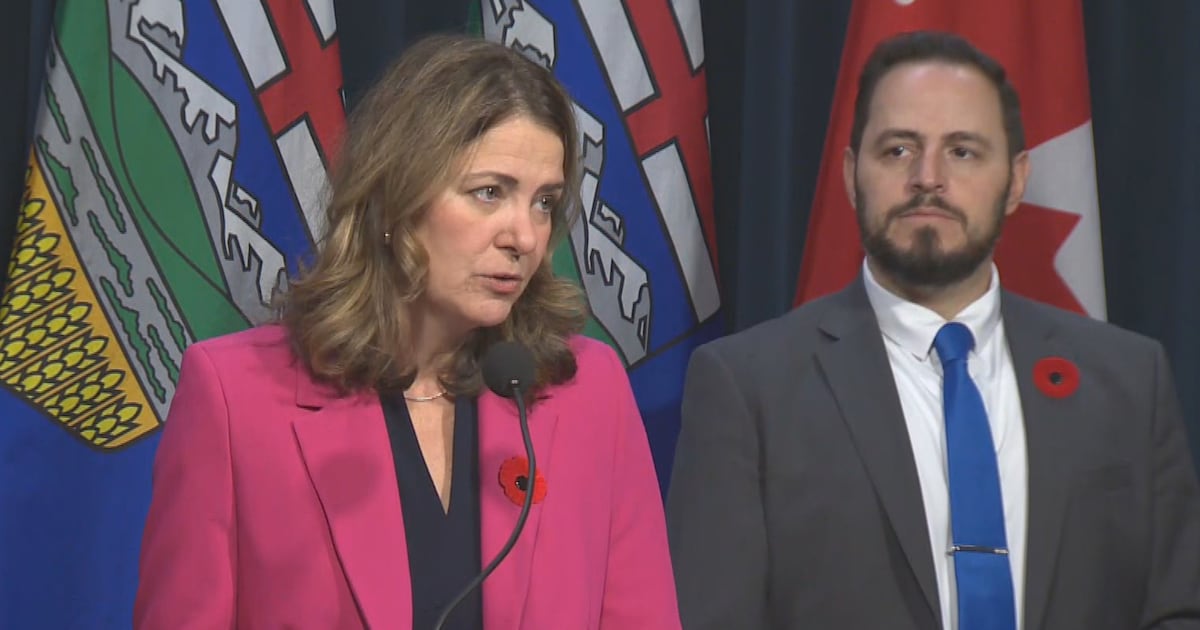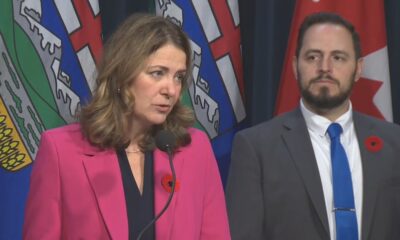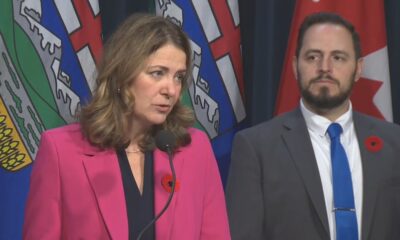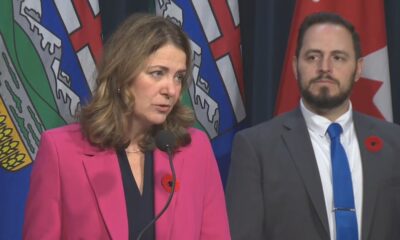Education
Alberta Premier Launches Committee to Address Classroom Challenges

Alberta Premier Danielle Smith announced on March 15, 2024, the establishment of the Class Size and Complexity Cabinet Committee, aiming to tackle the challenges posed by overcrowded classrooms in the province. This move follows ongoing negotiations between the provincial government and the Alberta Teachers’ Association (ATA), which have been strained over issues related to classroom conditions.
In a press conference held in Calgary, Smith emphasized the need for a multifaceted approach to address the complexities faced by educators and students. “These issues create challenges for teachers, educational assistants, as well as students, and we want to work with you to deal with them head-on,” she stated. Alongside Education Minister Demetrios Nicolaides, Smith outlined the committee’s purpose to coordinate efforts across various ministries to better support students with diverse needs.
The committee’s formation comes after a 25-member expert panel was created months prior to scrutinize class sizes and complexities in Alberta’s educational system. Notably, this announcement follows the controversial passage of Bill 2, which mandates teachers to return to work amidst ongoing disputes.
Committee Composition and Teacher Involvement
The newly formed committee will consist of 11 members, including Smith and Nicolaides. In a notable shift from previous initiatives, this committee will actively seek input from teachers. Nicolaides indicated that the committee would engage with various stakeholder groups and organizations to gather insights and perspectives. “Apart from individuals that are specifically represented, the committee will be reaching out to different stakeholder groups, organizations and individuals,” he explained.
The ATA has previously criticized the government for not involving teachers in the initial committee tasked with reviewing educational policies. ATA officials reiterated that teacher input is vital, arguing that excluding their expertise undermines efforts to enhance classroom environments.
Smith also addressed concerns regarding classroom size and resource allocation. She noted that Alberta has approximately 51,000 teachers and 750,000 students, suggesting that class sizes should ideally average between 13 and 14 students per teacher. However, she acknowledged that many teachers are not present in classrooms, complicating the situation.
Addressing Classroom Complexity Across Districts
The Premier identified Calgary, Edmonton, and Red Deer as districts facing particularly acute challenges regarding classroom size and complexity. Smith stated, “We’re going to identify those classrooms with the greatest complexity and greatest class size, and we’re just going to allocate the resources and start solving it.”
She also highlighted the disparity in resources, mentioning that some school districts have a higher number of educational assistants than others. “If we have the same complexity across the board, you do need to have those extra hands to be able to do small classroom support,” Smith added. Her remarks underscore a commitment to a holistic approach toward addressing the varied needs of students.
As negotiations continue, Smith defended the government’s decision to invoke the notwithstanding clause in Bill 2 to compel teachers back to work, following the ATA’s announcement of a legal challenge against the legislation. ATA President Jason Schilling condemned the government’s actions, emphasizing the need to protect teachers’ rights and the integrity of the legal framework.
In summary, the creation of the Class Size and Complexity Cabinet Committee marks a significant development in Alberta’s education landscape. By fostering cross-ministry collaboration and involving educators in the process, the province aims to tackle the pressing challenges within its classrooms, striving for a better educational environment for both teachers and students.
-

 World4 months ago
World4 months agoScientists Unearth Ancient Antarctic Ice to Unlock Climate Secrets
-

 Politics3 days ago
Politics3 days agoSecwepemc First Nation Seeks Aboriginal Title Over Kamloops Area
-

 Entertainment4 months ago
Entertainment4 months agoTrump and McCormick to Announce $70 Billion Energy Investments
-

 Lifestyle4 months ago
Lifestyle4 months agoTransLink Launches Food Truck Program to Boost Revenue in Vancouver
-

 Science4 months ago
Science4 months agoFour Astronauts Return to Earth After International Space Station Mission
-

 Technology2 months ago
Technology2 months agoApple Notes Enhances Functionality with Markdown Support in macOS 26
-

 Top Stories4 weeks ago
Top Stories4 weeks agoUrgent Update: Fatal Crash on Highway 99 Claims Life of Pitt Meadows Man
-

 Sports4 months ago
Sports4 months agoSearch Underway for Missing Hunter Amid Hokkaido Bear Emergency
-

 Politics3 months ago
Politics3 months agoUkrainian Tennis Star Elina Svitolina Faces Death Threats Online
-

 Politics4 months ago
Politics4 months agoCarney Engages First Nations Leaders at Development Law Summit
-

 Technology4 months ago
Technology4 months agoFrosthaven Launches Early Access on July 31, 2025
-

 Top Stories2 weeks ago
Top Stories2 weeks agoFamily Remembers Beverley Rowbotham 25 Years After Murder





















